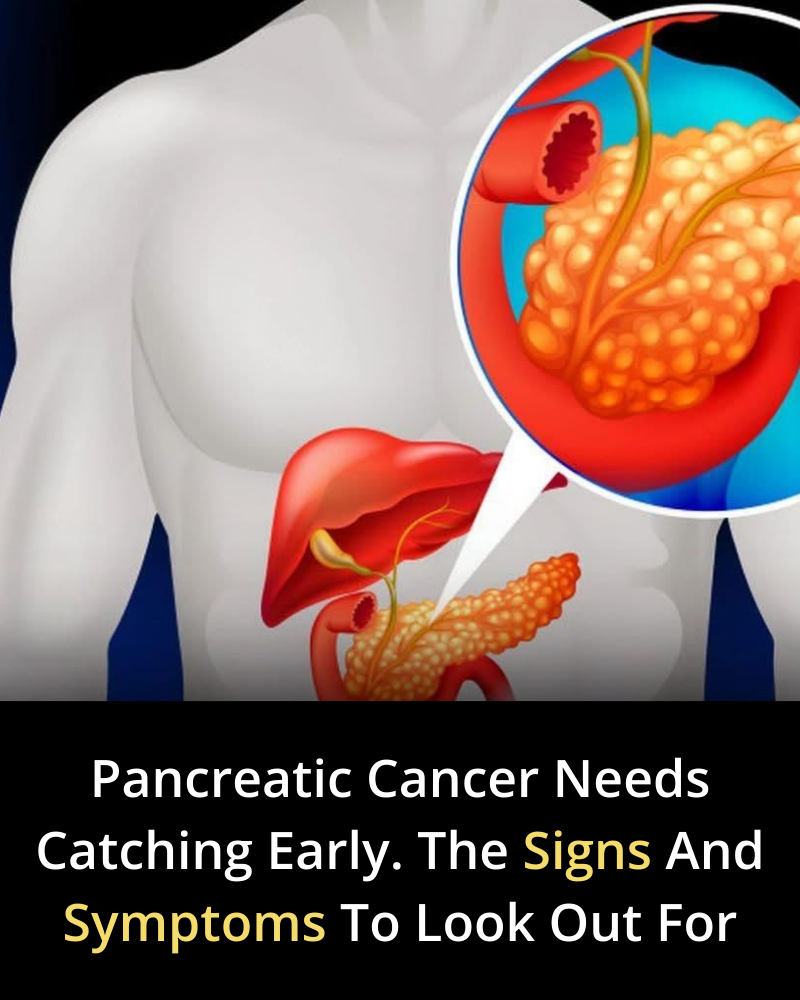
Pancreatic cancer is a severe and often life-threatening disease that affects thousands of people each year. Its low survival rate is largely due to late-stage diagnoses, making early detection crucial for improving treatment success.
Recognizing the warning signs can increase the chances of identifying the disease sooner. Here are ten key symptoms of pancreatic cancer that should never be ignored, along with essential information about this deadly condition.
Understanding Pancreatic Cancer
The pancreas, an essential organ located in the abdomen, plays a vital role in digestion and hormone regulation. It produces enzymes to break down food and hormones such as insulin, which helps convert glucose into energy. Pancreatic cancer develops when abnormal cells grow uncontrollably within the pancreas, forming a tumor.
The most common type, adenocarcinoma, accounts for about 95% of cases and typically begins in the ducts that transport digestive enzymes from the pancreas to the small intestine.
Other forms include neuroendocrine tumors (NETs), which tend to grow more slowly, and cystic tumors, which are often benign but have the potential to become cancerous. Understanding the early warning signs of pancreatic cancer is essential for seeking prompt medical attention.

10 Symptoms of Pancreatic Cancer
One of the reasons pancreatic cancer is so deadly is that symptoms often appear only in later stages, making early detection difficult. However, being aware of these signs can help with timely medical intervention and significantly improve treatment outcomes. Below are ten of the most common symptoms of pancreatic cancer:
1. Unexplained Weight Loss
Losing weight without trying—especially when accompanied by a loss of appetite—can be an early indicator of pancreatic cancer.
2. Jaundice
A yellowing of the skin and eyes caused by a buildup of bilirubin may signal that a tumor is blocking the bile duct.
3. Abdominal Pain
Ongoing or unexplained abdominal discomfort, which may radiate to the back, can be a symptom. The pain may vary in intensity and often worsens after meals.
4. Digestive Issues
When the pancreas fails to produce enough digestive enzymes, symptoms such as indigestion, diarrhea, or greasy, foul-smelling stools may occur.
5. New-Onset Diabetes
Disruptions in insulin production due to pancreatic cancer can lead to diabetes in individuals who previously had no history of the condition.
6. Changes in Stool
Pale, greasy, or floating stools may indicate problems with fat digestion, which can be a warning sign of pancreatic cancer.
7. Fatigue
Persistent tiredness and a lack of energy may be linked to pancreatic cancer, possibly due to anemia or the effects of the disease itself.
8. Back Pain
Chronic or worsening back pain can suggest that the cancer has spread to nearby nerves or tissues.
9. Blood Clots
An increased risk of blood clots is associated with pancreatic cancer and may cause swelling, pain, redness, or warmth in the affected area.
10. Gastrointestinal Symptoms
Nausea, vomiting, or feeling full quickly after eating small amounts can be warning signs, especially if these issues persist over time.

Speaking to Your Doctor & Prevention Strategies
If you experience any of these symptoms, it is essential to consult a healthcare provider. A medical professional can evaluate your condition, perform necessary tests, and determine the next steps if pancreatic cancer is suspected.
While there is no guaranteed way to prevent pancreatic cancer, adopting healthy lifestyle habits can help lower the risk. These include:
- Maintaining a healthy weight
- Avoiding tobacco and excessive alcohol consumption
- Eating a balanced diet
- Engaging in regular physical activity
Understanding personal risk factors is also crucial for early awareness and detection.
Risk Factors for Pancreatic Cancer
Certain factors increase the likelihood of developing pancreatic cancer:
- Age – The risk rises with age, with most cases diagnosed in people over 60.
- Smoking – Cigarette smoking is one of the leading risk factors, responsible for about 20% of cases.
- Diabetes – Individuals with diabetes face a roughly 50% higher risk due to elevated insulin levels, which may encourage cancer cell growth.
- Obesity – Being overweight increases the risk by approximately 20%.
- Family History – A close relative with pancreatic cancer raises the risk, particularly for those with genetic mutations such as BRCA1 and BRCA2.
- Ethnicity – African Americans and individuals of Ashkenazi Jewish descent have a higher risk.
- Chemical Exposure – Working with certain industrial chemicals, such as those used in metalworking or dry cleaning, may increase risk.
- Gender – Men are slightly more likely than women to develop pancreatic cancer.

The Bottom Line
Pancreatic cancer is a devastating illness, but increased awareness of its symptoms can lead to earlier detection and better treatment outcomes. Recognizing the ten warning signs discussed in this article could potentially save lives. If you or a loved one experiences any of these symptoms, it is vital to seek medical advice promptly for further evaluation and guidance.

